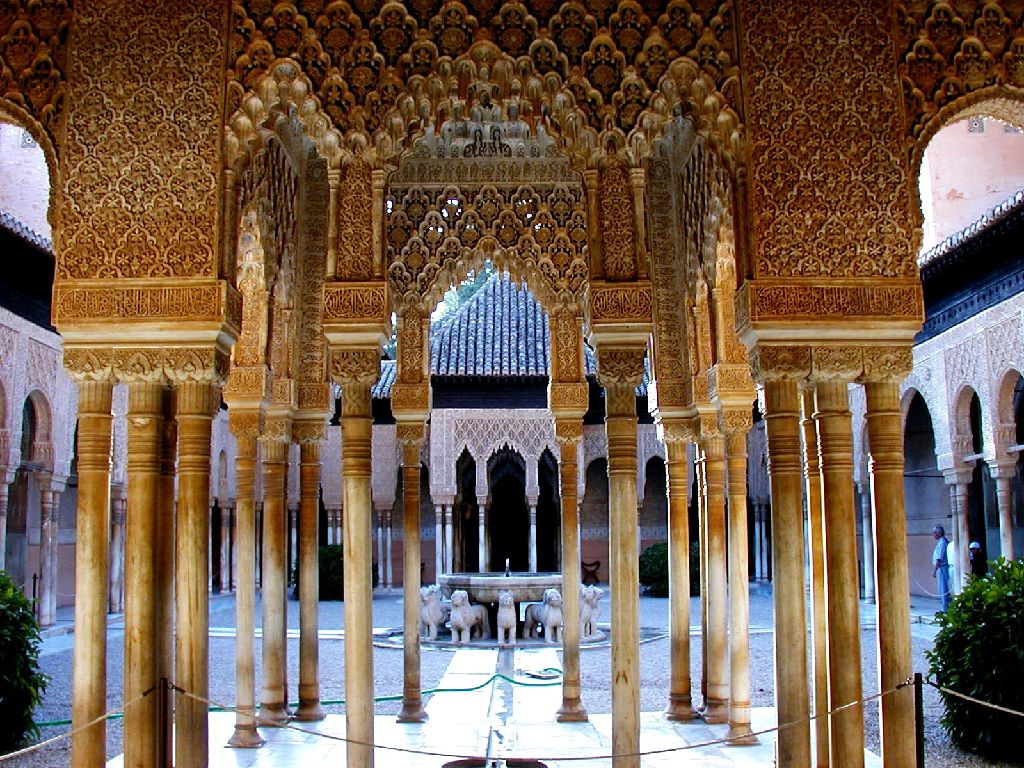
(Wikimedia Commons public domain)
Another passage from the manuscript:
Gradually, as the West noticed the riches that were available in Arabic scientific and mathematical writings, the pace of translation picked up. “From the second half of the eighth to the end of the eleventh century,” writes the great historian of science George Sarton, “Arabic was the scientific, the progressive language of mankind… When the West was sufficiently mature to feel the need of deeper knowledge, it turned its attention first of all, not to Greek sources, but to the Arabic ones.”[1] A “College of Translators,” established at Toledo in the high Middle Ages and functioning very much along the lines of the earlier House of Wisdom at Baghdad, was instrumental in transmitting Arab science to the West. This fact left its own mark upon Western mathematics, as a simple illustration will show:
We commonly use the letter “x” to represent an unknown quantity. Originally, this was merely the practice in algebra and mathematics, but it eventually entered into everyday life, where we speak of things like “Brand X.” How did we come to choose the letter “x” for this? Why not some other letter? Well, as you might have begun to suspect, this habit comes in a roundabout way from Arabic. Older Spanish and Portuguese spelling used to use the letter “x” to represent what we in English know as the “sh” sound. It so happens that the word for “thing” or “something” in Arabic is shay. Thus, when the Spanish and Portuguese translators who transmitted Arabic mathematics to the West wanted an easy-to-write symbol that stood for an unknown quantity, they simply took the first letter of the Arabic word “something.”
Now is the time to mention the immense influence of Arabic on the Spanish language itself. As I have said, there was an important Arab presence in Spain and Portugal for nearly 800 years, from 711 A.D. to the year 1492. It is not surprising, in view of this long contact between the Arabs and the Iberian Peninsula, that many place names on the peninsula are clearly derived from Arabic. When we say that something is “as solid as the rock of Gibraltar,” we are speaking at least some fractured Arabic, for the name Gibraltar is a distorted memory of the Arabic phrase jabal al-Tariq, meaning “al-Tariq’s mountain.” Many of those place names were actually carried into the New World by the conquistadors. One common element that appears frequently is the Arabic word wadi (“valley”). In the corrupt form of Guad-, it appears as a part of numerous place names both in Europe and in the Americas. The beautiful Mexican city of Guadalajara comes immediately to mind, but it is merely one example among many. In Spain itself, there is Guadalquivir—from the Arabic phrase al-wadi al-kabir (“the big valley”).[2] Other Spanish words also come directly from Arabic, such as alcalde (“mayor”), which recalls the old office of al-qadi, “the (religious) judge.”[3]
Such influence through Spanish is yet another way that the Arabs have had impact on the West, and particularly on the American West and Southwest where many of the readers of this book no doubt live. I myself graduated from a school in the Alhambra High School District in southern California, not realizing at the time that the Alhambra was a famous Arab palace in the south of Spain. (Al-qasr al-hamra means “The Red Castle.”) The adjacent town was actually called Alhambra, and one of the town’s streets, “Almansor,” was named after a great Arab ruler of Spain known as al-Mansur.[4]
[1] George Sarton, Introduction to the History of Science.
[2] Pronounced “al-WAH-dee al-kuh-BEER.”
[3] Some have thought that the Spanish usted might come from the Arabic ustadh, an honorific form of address meaning “master” (or, in contemporary Arabic, “professor”). This is probably not true.
[4] Pronounced “al-Man-SOOR.”
Posted from Laie, Oahu, Hawai’i












